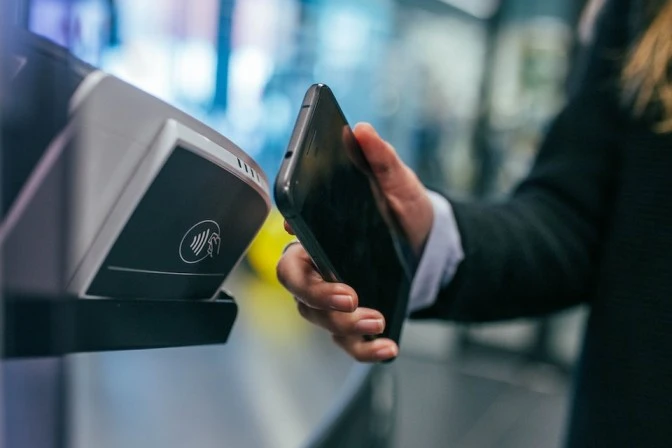The world of payment processing is undergoing a seismic shift, driven by the rapid advancements in technology and changing consumer expectations. Emerging technologies are reshaping the way payments are made, creating new possibilities for businesses and consumers alike. In this article, we explore the future of payment processing, delving into the innovative technologies and trends that are revolutionizing the industry.
The Transformative Power of Emerging Technologies
Emerging technologies are redefining the landscape of payment processing, enabling faster, more secure, and seamless transactions. Let’s explore some of the key technologies driving this transformation:
1. Mobile Payments and Digital Wallets
Mobile payments and digital wallets have become increasingly popular, offering convenient and contactless payment options. With the proliferation of smartphones and the integration of secure payment platforms, consumers can now make purchases with just a few taps on their devices, eliminating the need for physical cards or cash.
2. Blockchain and Cryptocurrencies
Blockchain technology, known for its decentralized and secure nature, has disrupted the traditional payment ecosystem. Cryptocurrencies, such as Bitcoin and Ethereum, leverage blockchain to enable peer-to-peer transactions, bypassing intermediaries and reducing transaction costs. This technology offers transparency, enhanced security, and the potential for cross-border transactions without the need for traditional banking systems.
3. Biometric Authentication
Biometric authentication, including fingerprint scanning, facial recognition, and iris scanning, is revolutionizing payment security. By utilizing unique biological identifiers, these technologies provide a higher level of security and convenience, replacing traditional authentication methods like PINs and passwords.
4. Artificial Intelligence and Machine Learning
Artificial intelligence (AI) and machine learning (ML) algorithms are being employed to detect fraudulent transactions, enhance risk management, and personalize customer experiences. AI-powered chatbots and virtual assistants are also streamlining customer support and providing real-time assistance with payments.
5. Internet of Things (IoT) and Connected Devices
The Internet of Things (IoT) is connecting various devices, from wearables to smart home appliances. This connectivity enables seamless payment experiences, such as smartwatches making payments at point-of-sale terminals or connected cars paying for fuel or tolls automatically.
Trends Shaping the Future of Payment Processing
Beyond the technologies themselves, several trends are shaping the future of payment processing:
1. Contactless and Near Field Communication (NFC) Payments
Contactless payments, facilitated by NFC technology, are gaining widespread adoption. With a simple tap or wave of a card or smartphone, consumers can complete transactions swiftly, enhancing convenience and reducing physical contact.
2. Embedded Payments
Embedded payments involve integrating payment capabilities directly into various applications and platforms. This trend enables seamless transactions within third-party apps, social media platforms, and even voice-activated assistants, providing a frictionless payment experience.
3. Subscription-based and Recurring Payments
Subscription-based services are on the rise, and with it comes the demand for recurring payment models. This trend simplifies the payment process for consumers while providing businesses with a predictable revenue stream.
4. Enhanced Security Measures
As payment processing becomes more digitized, the need for robust security measures intensifies. Advanced encryption techniques, tokenization, and multi-factor authentication are being deployed to safeguard sensitive payment data and prevent fraud.
5. Integration of Big Data Analytics
Payment processors are leveraging big data analytics to gain valuable insights into customer behavior, spending patterns, and fraud detection. This data-driven approach enables targeted marketing, personalized offers, and proactive risk management.
Embracing a Seamless Payment Future
The future of payment processing is undoubtedly exciting, driven by emerging technologies and evolving consumer preferences. As businesses navigate this landscape, they should consider the following strategies:
1. Embrace Omni-channel Payment Solutions
Providing customers with a seamless payment experience across multiple channels, whether online, in-store, or mobile, is paramount. Embrace omni-channel payment solutions that enable customers to pay conveniently, regardless of the platform they choose.
2. Prioritize Security and Compliance
Maintain stringent security measures to protect customer data and ensure compliance with relevant regulations, such as the Payment Card Industry Data Security Standard (PCI DSS). Implement fraud prevention mechanisms and stay updated on emerging security threats.
3. Foster Collaboration and Partnerships
Collaborate with technology providers, financial institutions, and industry stakeholders to leverage their expertise and access innovative payment solutions. Partnerships can drive innovation, expand market reach, and create mutually beneficial opportunities.
4. Embrace Customer-Centricity
Place the customer at the center of payment experiences. Strive to understand their preferences, pain points, and expectations. Invest in user-friendly interfaces, personalized experiences, and proactive customer support to enhance satisfaction and loyalty.
5. Stay Agile and Adaptive
The payment landscape is ever-evolving, so businesses must remain agile and adaptive. Continuously monitor industry trends, evaluate emerging technologies, and be prepared to pivot and embrace new payment solutions to stay competitive.
Unlocking the Payment Revolution
The future of payment processing holds immense potential for businesses willing to embrace the opportunities presented by emerging technologies and evolving consumer demands. By staying ahead of the curve, businesses can unlock new avenues for growth, enhance customer experiences, and position themselves at the forefront of the payment revolution.
